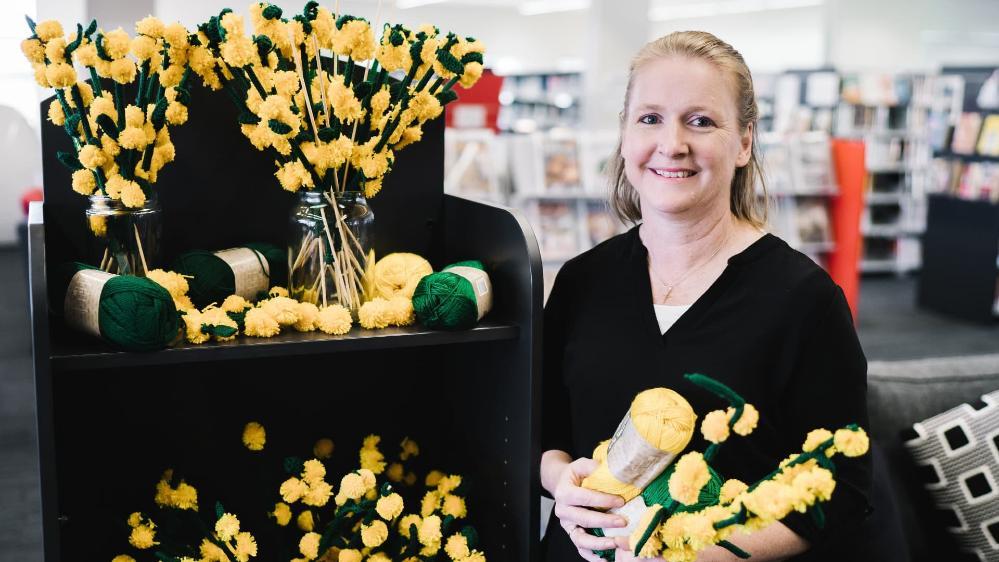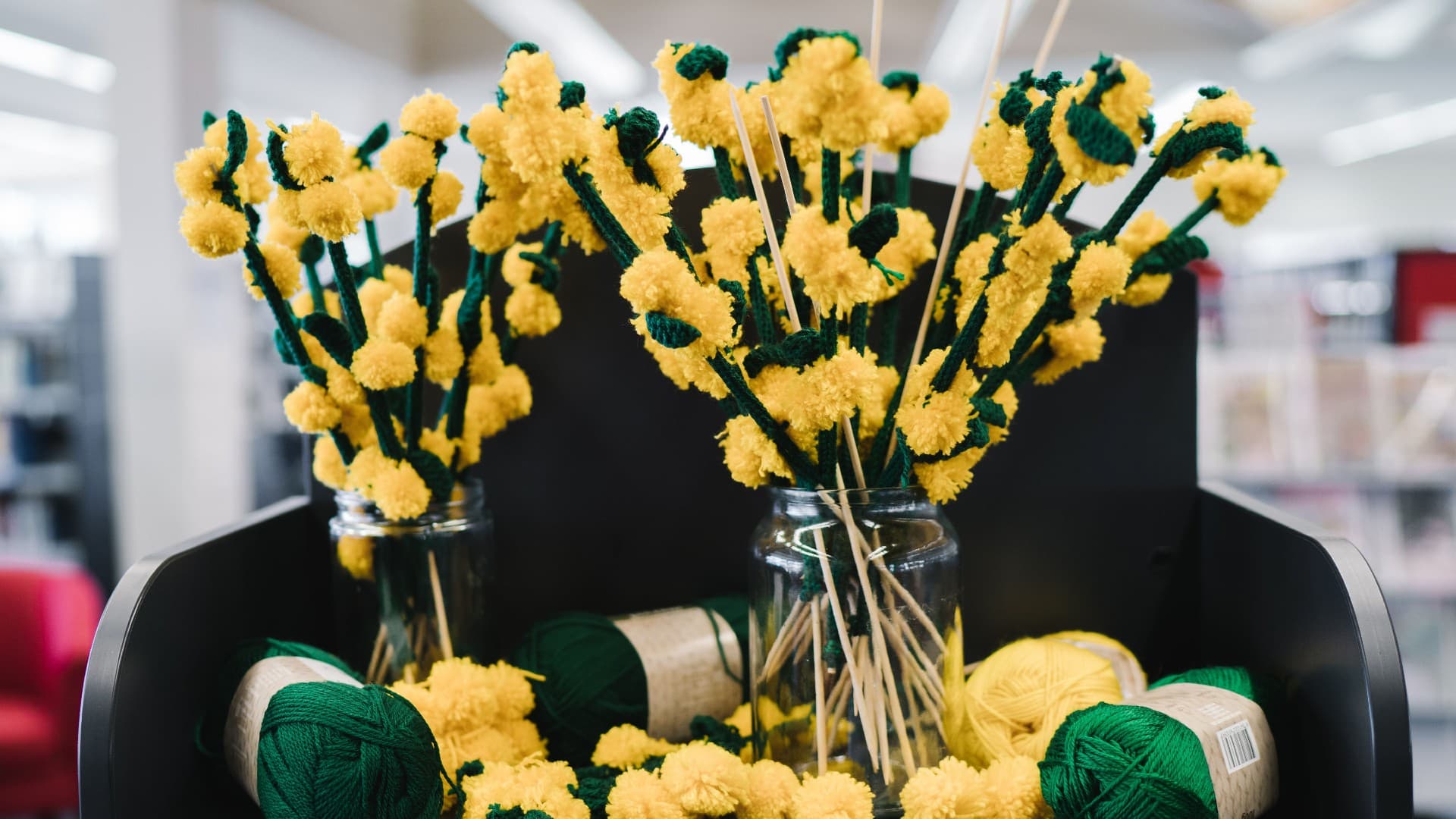June 8, 2021
Wattle Walk to highlight spirit of community after devastating bushfires
South Coast knitters encouraged to contribute to vibrant art installation at Batemans Bay
The wattle plant is one of the first to regenerate after the bush has been scorched by fire.
So, it seemed the ideal choice of native plant to commemorate the devastating bushfire season that tore through the NSW South Coast over the summer of 2019/2020.
The team from the University of ╠ý├└┤ź├ŻappÔÇÖs (╠ý├└┤ź├Żapp) Batemans Bay campus are creating a ÔÇťWattle WalkÔÇŁ to recognise the immense and ongoing impact that the Black Summer bushfires had on the coastal community of Batemans Bay and its surroundings.
╠ý├└┤ź├Żapp Batemans BayÔÇÖs Wattle Walk Community Project, with the support of Eurobodalla Shire Council Libraries, Eurobodalla Regional Botanic Garden, the River of Art Festival, with funding from COORDINARE ÔÇô South Eastern NSW PHN through the Australian GovernmentÔÇÖs PHN Program, will see members of the community come together to create thousands of handmade knitted wattle branches.
The completed branches, comprising green stems and yellow pom poms, will form a landscape of knitted wattle that will be displayed in the grounds of the Eurobodalla Regional Botanic Garden. In addition, the art installation will be included as part of the River of Art, an annual festival that celebrates the vibrant arts scene of the Far South Coast.
Jaimey Facchin, Manager of ╠ý├└┤ź├Żapp Batemans Bay, said the Wattle Walk was a great initiative that would recognise the trauma inflicted on the community during the Black Summer bushfires and celebrate the heroes who played such a significant role in protecting the community during those terrifying weeks.
When the Currowan Bushfire of 2019/2020 tore through the South Coast, hundreds of people sought shelter at ╠ý├└┤ź├ŻappÔÇÖs Batemans Bay campus. Over several days, ╠ý├└┤ź├Żapp staff member Nicola Bath helped to house, feed, and support families, elderly couples, ╠ý├└┤ź├Żapp students and staff, and countless pets.
ÔÇťThe purpose is to create a shared experience that symbolises our combined loss but also celebrates regrowth and healing,ÔÇŁ Mrs Bath said.
ÔÇťWattles play a vital role in restoring ecosystems after fire, but the yellow colour is also symbolic of the yellow NSW Rural Fire Service uniform that is given to every brigade member when they pass their basic training.
ÔÇťThe golden wattle is native to south-eastern Australia, and when their seeds are exposed to heat, they germinate quickly, helping to stabilise soil and return nitrogen to the system.ÔÇŁ

Nicola Bath, from ╠ý├└┤ź├Żapp Batemans Bay, with knitted wattle flowers that have already been created for the community art installation. Photo: Sunbird Photography
It was a horrific time for the entire community, one that has left a permanent scar some 18 months later.
The ╠ý├└┤ź├Żapp team have an ambitious goal to create an art installation of 37,000 wattle branches, one for every member of the Batemans Bay community.
ÔÇťWe were inspired by the Australian War MemorialÔÇÖs 2018 display of 62,000 poppies, a tribute to the Australian lives lost in World War 1,ÔÇŁ Ms Facchin said.
Knitting workshops are being run at the library, which adjoins the Batemans Bay Campus, but they are also encouraging community members who want to get involved in picking up wattle kits from the library and then drop them off when the branches are completed.
The Wattle Walk will be launched during the River of Art festival, which will run from September 17-26.
Ms Facchin said they are excited to see the community come together to create a memorable art installation.
Keen knitters can pick up a pattern and wattle kit at Narooma, Moruya or Batemans Bay libraries. Completed wattles, stem, leaves, and pom poms can be dropped off at the same locations.
There is also an instructional video available with a step-by-step guide to creating a wattle branch:
